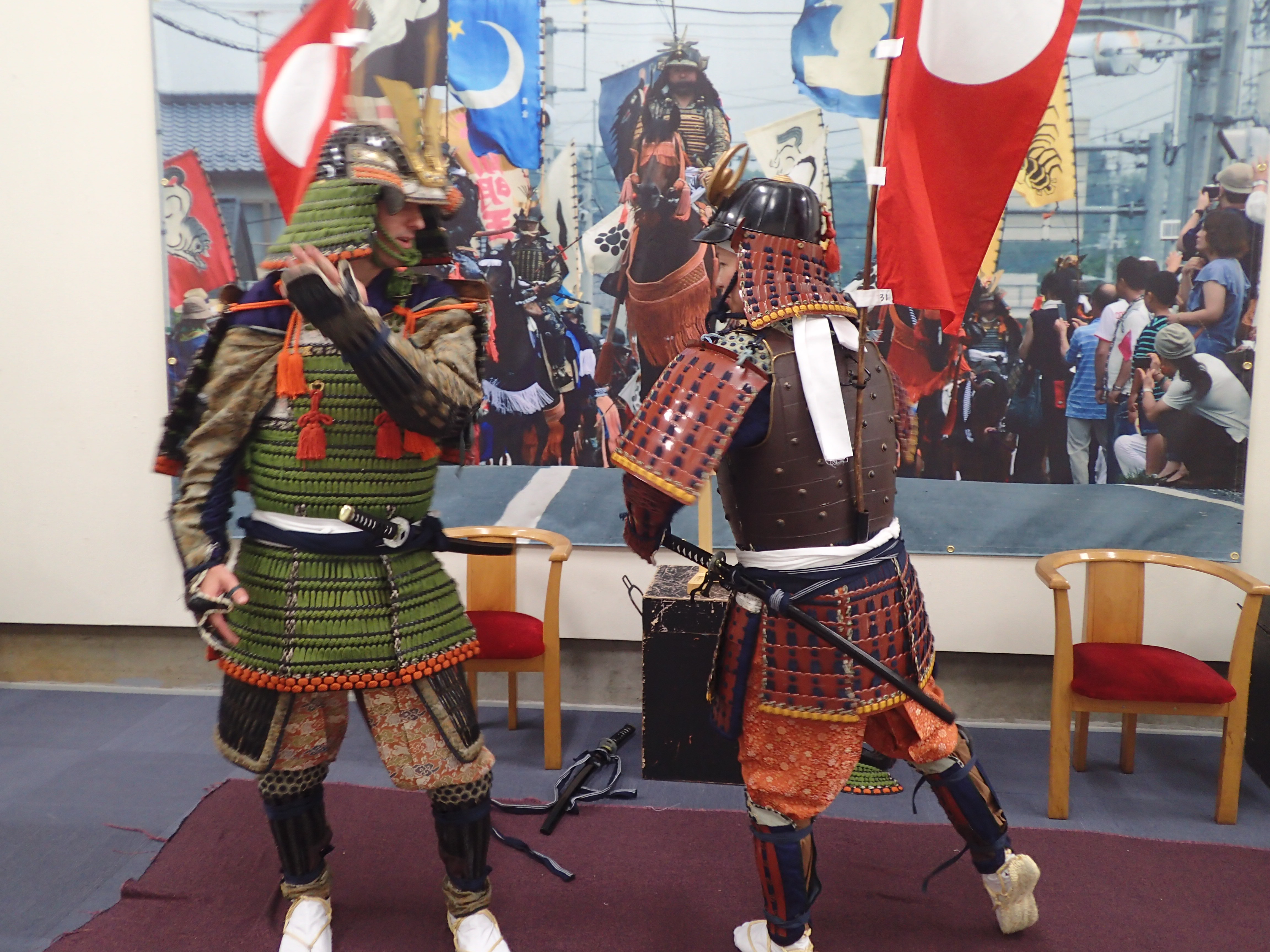On our recent trip to Japan we stayed a few days in Souma (相馬市) which resides in Fukushima prefecture (福島県) in northeast Japan, a few hours from Tokyo by speed train. Souma (sometimes written as Soma) is a relatively small city with a population of roughly 35,000 people, considered as a castle town (城下町) in the Edo period.
Souma is the home of the famous “Souma field horse riding” (相馬野馬追, “Souma nomaoi”) which is a traditional event that has taken place each July for over 60 years. The event contains both a festival portion (お祭り)as well as a Shinto ritual portion (神事). Although originally combined, 2these have been done on separate days since 2011.
One of the highlights of the event is the “flag contest” (神旗争奪戦) which involves racing on horses with flags (神旗) that represent various Gods. The participants wear traditional clothes from the Edo period, and the sight of hundreds of horse riders on a large field is pretty amazing, as you can see in this video.
Unfortunately, we arrived in Japan a few days after the festival had ended, and weren’t able to see it in person. But a relative had scheduled us to participate in a little mini event of our own, where we donned authentic clothes similar to those in the festival and did a photo shoot.
We were taken to a gift shop, and then passed through the back door into an outside area which connected to a small warehouse-type building. We entered, and in a back room there was an small space with three sets of warrior armor (甲冑) along with helmets (兜) layed out. Me and my wife each picked a set to wear, and there were two assistants there to help us put the equipment on. This was quite a process, which involved several layers of clothing and fastening various places, and the total weight of the helmet and armor (mostly metal and cloth, with no plastic) was over 20 pounds.
To make matters worse, the warehouse lacked air conditioning and Japan happened to be a period of extreme heat (猛暑). We did our best to aim the several fans towards us, but after the nearly hour-long process we were soaked with sweat. During the session I asked the male assistant a few questions, including what type of person would historically wear this type of armor. His response was お殿様 (“otonosama”), which means a feudal lord. I believe warriors who wear this type of garb and fight on horses can also be called by the more familiar term samurai (侍), though this class of people is very different than a feudal lord.
After we got suited up we took pictures for 10 minutes or so with a backdrop of the aforementioned festival, and then spent another 20 minutes to get undressed.
Despite the heat and weight, It was a very memorable experience which I think we’ll never forget. To add to the excitement, there was even a small earthquake while we were there.
As we left we passed through gift shop again and spent some time looking over their wares, which included traditional fans (うちわ), postcards, and other memorabilia related to the festival.
References
http://soma-nomaoi.jp/honmaturi.htm
https://ja.wikipedia.org/wiki/相馬市
https://ja.wikipedia.org/wiki/相馬野馬追

What a great experience! I participated in the Shingen-ko matsuri in Kofu, Yamanashi Prefecture when I was studying there. Foreigners are always invited, and it’s held on the first weekend in April, if you ever head to Japan during that time period. You march around in armour, but it’s not quite as hot as the middle of summer! Thanks for sharing ^^
That matsuri looks like fun, thanks for the info. Thanks for reading!